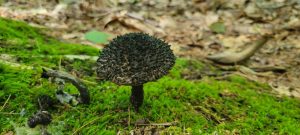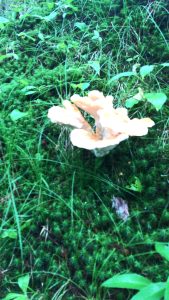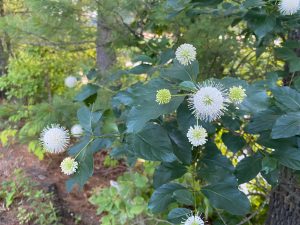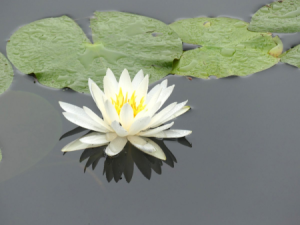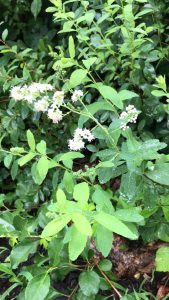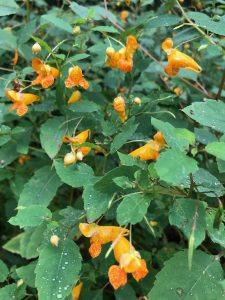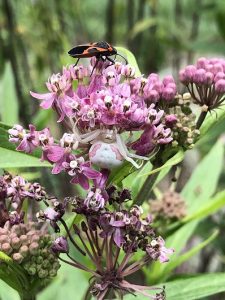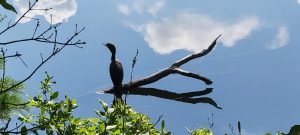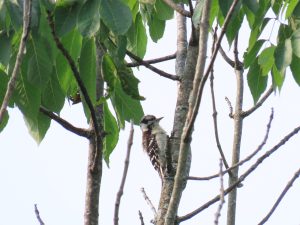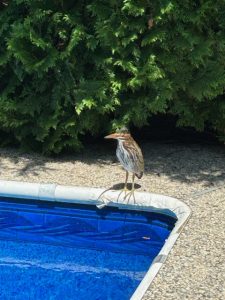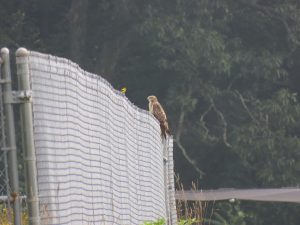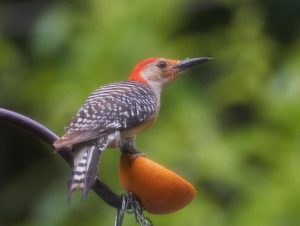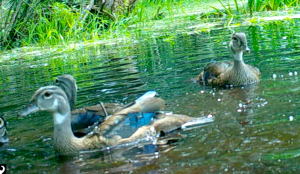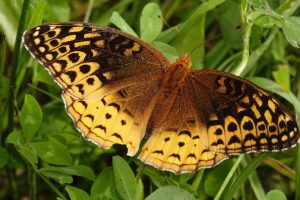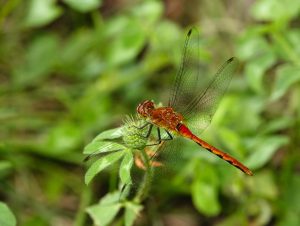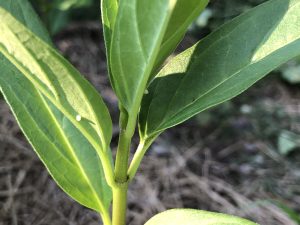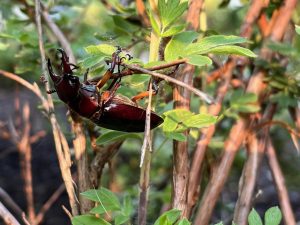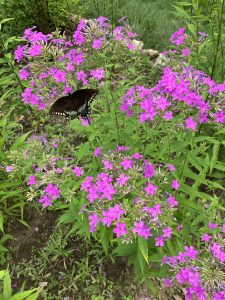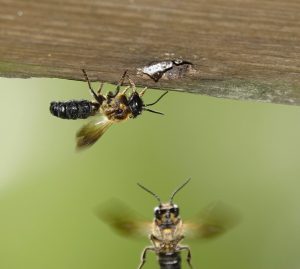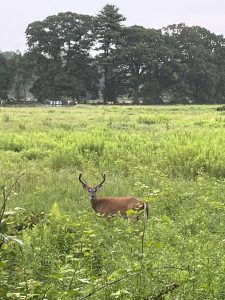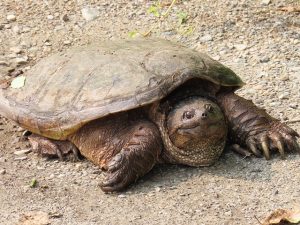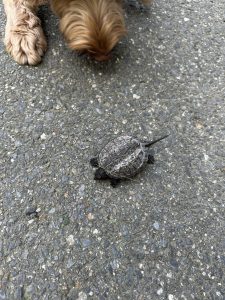Written by Gwyn Loud for the Lincoln Land Conservation Trust. She welcomes your sightings and questions at 781-259-8690 or gwynloud555@gmail.com
So far, Lincoln has escaped the record-breaking heat which has gripped the southern US and much of the world. Climate change driven by human use of fossil fuels and exacerbated by El Nino, is impacting millions of people, not just with excessive heat but with severe weather, bringing floods, wildfires, tornadoes, and more. We all see the pictures and we must not assume we are immune. Locally, our summer to date has been very humid, with lots of rain and we have had days of poor air quality from the wildfires in Canada. Photos from a year ago show my lawn all brown; remember the drought?
Thanks to all the rain, fungi are prospering and weeds and shrubs seem taller than ever. The catalpa tree by the Library bloomed a few weeks ago and now the green of summer woods has shifted from its bright spring hue to a darker shade. Walking in a meadow, you may come across wildflowers such as spotted Joe-Pye weed, and a few species of goldenrod just starting to bloom, all good for pollinators. Roadsides and field edges are habitats for tufted vetch, butter-and-eggs (aka common toadflax), white meadowsweet, and creeping bellflower (purple). I came across a lone patch of purple loosestrife; this colorful but invasive plant has been greatly reduced, thanks to biological control by a beetle. Milkweed is flowering and, hopefully, monarch butterflies will find it; milkweed is also host to other insects and spiders. Blooming water lilies are giving color to the surface of ponds and in damp areas touch-me-not (aka jewelweed) is just beginning to flower. Its trumpet-shaped yellow blossoms are sought after by hummingbirds, especially during their fall migration.
Bird song is greatly diminished now that the periods of courtship, claiming territories, and nesting are past. However, wood thrushes are still singing in the woods, as are Eastern wood pewees, pine warblers, and great-crested flycatchers. Carolina wrens sing loudly year-round as if to make up for their small size. Red-shouldered hawks and red-tailed hawks have been calling in my neighborhood and a young Cooper’s hawk has been visiting a backyard on Boyce Farm Road. Recently, from the silence in the middle of the night, I heard a distant barred owl giving its “Who cooks for you?” call.
There are a few birds which may have a third brood, such as a pair of bluebirds at a residence by Farrar Pond. We see plenty of young birds, often looking a bit “scruffy” and without full adult plumage. My no-melt suet cake is quickly devoured by families of tufted titmice, chipping sparrows, cardinals, chickadees, downy, hairy and red-bellied woodpeckers, blue jays and white-breasted nuthatches. Young ruby-throated hummingbirds are busy sipping the sugar water but also visiting flowers in the garden. My neighbor took a video of young wood ducks looking playful as they swam in her swamp. From Drumlin Farm come reports of many young barn and tree swallows, young house finches, good numbers of chimney swifts, a marsh wren, and yellow-billed cuckoo. Scarlet tanagers, red-eyed vireos, common yellowthroats, yellow warblers, Baltimore orioles, gray catbirds, rose-breasted grosbeaks, and bobolinks are other regular summer residents; many will quietly disappear over the next month as fall migration begins. A pair of mute swans is still on Farrar Pond, with one surviving cygnet, and a common loon is reported from both Walden Pond and Flint’s Pond.
Will Leona, one of Lincoln’s conservation rangers, wrote, “The eagle activity around Fairhaven Bay has been amazing. The other day I saw probably 6 belted kingfishers, several kingbirds, a few cormorants, two juveniles and one adult bald eagles, an osprey, over a dozen great blue herons, a green heron, multiple spotted sandpipers and more all within a few hours between the 117 canoe launch and Fairhaven Bay.” A friend’s swimming pool is being visited regularly by a family of five green herons- a most unusual sight. The young ones are getting unconventional lessons in where to catch frogs!
Insects are very evident, including ones which annoy us such as deer flies, mosquitoes, or Japanese beetles, but our ecosystems are dependent on healthy insect populations. Caterpillars, for instance, are essential food for baby birds. It is wonderful to see pollinator gardens all over town, both in private gardens and in the public pollinator gardens created by the LLCT. Various species of butterflies have been seen, such as tiger swallowtails, black swallowtails, red admirals, and a great spangled fritillary. A few monarch butterflies have been reported; let’s hope for more in the weeks to come. Carol Roede wrote, “I watched a female monarch going all around my perennials, nectaring and laying eggs, mostly on Swamp Milkweed. Interesting to watch them going around “tasting” plants with their feet – landing on grass and other plants but clearly hunting for milkweed. I managed to find a few of the eggs she laid – all on Swamp Milkweed. I have 3 other kinds of milkweed, but didn’t find any eggs on those plants.” Several of us in Lincoln had the wonderful experience of hiking to see the over-wintering monarchs in the mountains of Mexico in January. Seeing millions of them there made it hard to believe that they are actually in decline, though populations fluctuate from year to year. Much depends on the breeding success in North America in the summer; that’s where we can help by planting milkweed or leaving it standing in fields. Check the link below to read the latest status report on monarchs from the World Wildlife Fund and cooperating agencies.
Cicadas are making their whirring buzzy calls, and crickets are beginning to chirp. Conservation staff found a stag beetle (about two inches long) in the Town Office Building and managed to safely catch it and release it outdoors. I was dismayed to find two active bald-faced hornet nests low to the ground in forsythia bushes close to my house. Something pulled apart one of the nests, possibly a raccoon or skunk.
Presumably, frogs are benefitting from the high water levels and I can hear bull frogs calling from a distant pond. I was surprised to find a baby spring peeper, about half an inch long, between two glass panels of a storm door. As a tree frog, it could hold on with its sticky toe pads. Why was it there, a long way from swampy habitat.? It hopped away when I freed it.
Looking skyward, we will have two super full moons in August. The first, on August 1 is the Sturgeon Moon, named after an ancient and severely threatened fish. Sometimes it is called the Harvest Moon or the Corn Moon. On August 30th there will be a second full moon, which is therefore called a blue moon. It does not look blue! Both will also be “super moons,” meaning they will occur when the moon is at perigree, i.e. closest to the Earth in its orbit. To quote timeanddate.com, “According to our numbers, the last time we had a Super Blue Moon was in December 2009, and the next time will be in 9 years, in August 2032. The next Blue Moon is in August 2024, although this is not a Supermoon.”
Another annual astronomical event is the Perseid meteor shower. According to space.com, “The 2023 show is expected to be especially good. The annual summer spectacle…..will likely last through the end of August, with a predicted peak on August 13. This summer, there will be a thin, waning crescent moon around the peak time, meaning the brightness of the moon won’t interfere with any viewing parties you have planned. The best time to see the Perseids in the Northern Hemisphere is in the pre-dawn hours, so be sure to set your alarm extra early to catch them.”
I wish my readers happy experiences in the world of nature in August. This column will resume in September.
Pertinent links:
To read more about the status of monarch butterflies
To read more about the North American Green Sturgeon



